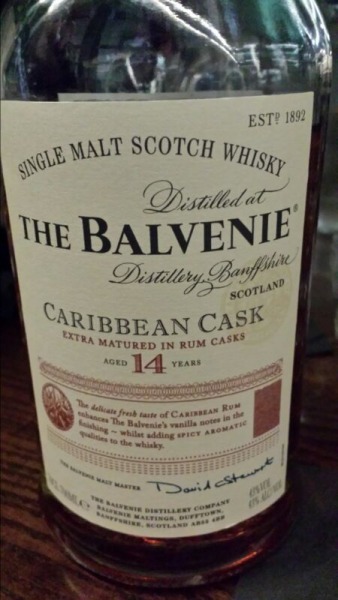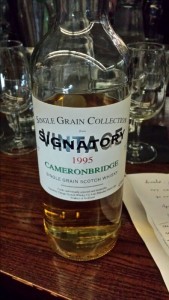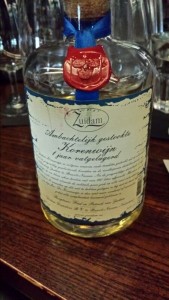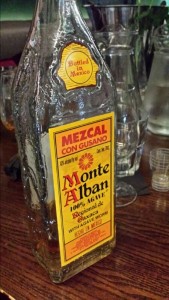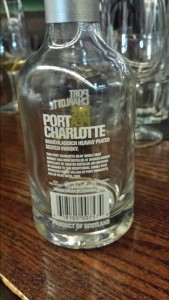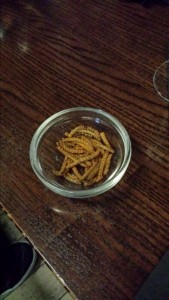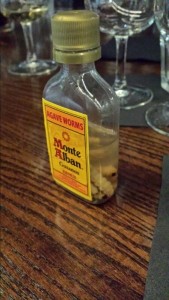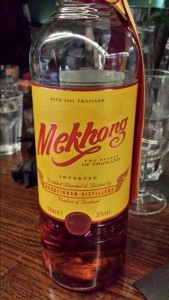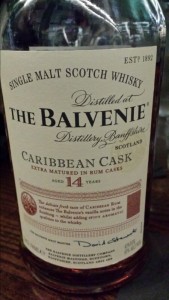This is a guest review written by Chris Henley – follow him on Twitter at @GastroHenley.
When I hear the words “tasting classes”, I immediately think of rather pretentious wine experts talking about flavour notes and hints of fresh grass. Now, I love wine, but when I heard there was a whisky tasting class at Papaji’s I jumped at the chance to go.
Papaji’s is located along Whiteladies Road very near Clifton Down, and most people may see the place as a tea house/parlour or a cocktail establishment. They are starting to fade out the tea house side of things and will be very soon going through a refurbishment which is to be undertaken by Bristol-based Simple Simon Designs. After the refurb, they will be concentrating more on the cocktails and liquor side of the business – with the aim of hosting more drinks masterclasses and informal drinks classes such as the one that I attended.
The evening was organised by Drinking Classes, who run a series of tasting classes featuring drinks including gin, tequila and, of course, whisky. The particular event I attended was the Whisky Mavericks class.
The evening turned out to be a blind tasting evening! We would have a dram of whisky and another dram of a different spirit. We would then have to ascertain which one was actually the whisky. Initially I just wanted to have additional whisky to be honest but then realised that it was the perfect opportunity to try new drinks that I normally would not go for.
We started off with an introduction to the night and then some of the regulars briefly discussed drinking classes that they had been on previously. It was a social and friendly mix of people and certainly a lot more relaxed than some of the wine tasting events I’ve been to.
Learning how to taste whisky was fascinating. We were told to swirl a small amount of whisky around the mouth for 20 seconds or so. This was to kill some of the receptors in our mouths so that we didn’t just taste alcohol. We didn’t want to have that strong, breath-taking feeling you get when you sometime have a drink of whisky. It would also bring out the flavour of the whisky more. This certainly warmed the mouth up, but after swallowing the now warm whisky and having another sip it all made sense. I had not heard this tip before, just as I had not heard about sniffing the back of your hand in order to reset the palate.
We had two glasses in front of us as well as a spittoon and a couple of jugs of water. The water was more to swirl out the glasses after having the drinks as mystery shot glasses were bought over to us and we had to then pour them into our glasses: mystery drink A and mystery drink B, and we had to ascertain which was which.
For the first round I actually found it hard to ascertain which was which. This did surprise me, to be honest, and hoped I wouldn’t be in this position all night…
The first whisky we had was a 1995 single grain Scotch from Diageo’s distillery in Cameronbridge. Signatory are an independent bottling company who bottle this interesting drink.
It was an incredibly light-coloured whisky and didn’t having the usual full-bodied smell some whiskies have. It is obviously a relatively young whisky – younger than what I’d normally drink. I found it quite light and ever so slightly fruity, but it’s not one I would personally rush out and buy. Throughout this whole process were told a lot about the distillery, blended and single grain whiskies. It was all done in an informal but professional way. There were no bouquets of wood shavings and distinct hints of summer days here: it was more a case of, “what do you think and do you like it?”
The second mystery drink was a Jenever, also known as a Holland gin or Dutch gin. My first thought? How could I find it so hard to tell the difference between this and whisky! The bottle was also rather striking, and looked like it belonged in a museum.
This malted barley drink with juniper was certainly an interesting drink, and one I enjoyed. Zuidam are a Dutch distiller, family run and providing Dutch courage for over half a century. They had to distill malt wine to 50% ABV and this was not a palatable taste, so they started to add herbs to mask the flavour. One of these additions was juniper (jeneverbes in Dutch).
It was very different to the other gins out there on the market. This one was aged for a year in wooden barrels and they predominantly use American white oak, however bourbon and Oloroso sherry casks are also popular. I’d definitely recommend popping into Papaji’s and giving it a try it you haven’t already.
We then rinsed out our glasses and were then given two other mystery drinks to pour into our glasses.
The second round of these mystery drinks I found a lot easier. What a relief! I’m a big fan of peaty whiskies, and one of these drinks was definitely peaty. The other drink seemed a bit more brand- like.
After people commented on flavours and smells, we were told what we were drinking. I got the whisky correct but the other liquor was a Mezcal. Now I’ve only really ever had tequila shots with salt and lemon, but this Mezcal, traditionally spelled Mescal, was sweeter and, in my opinion, had more flavour. It also had a slight smoky flavour to it.
We were informed that tequila and Mezcal are not the same. Papaji’s also host a tequila tasting class, and no salt and lemon will be anywhere near these drinks! Tequila is made from a single type of agave, surprisingly enough it’s the agave tequilana or blue agave, and can only be produced in the state of Jalisco and in small parts of four other states.
Mezcal, on the other hand, can be produced from up to 28 varieties of agave (including blue agave) and is made around the city of Oaxaca. We were told lots about Mezcal and tequila and how Mezcal producers follow the traditional method of using in ground pits.
After a hard day’s work, farmers and workers would stand around and share a bottle of tequila or Mezcal. Each one of them would take a swig and this is how shot glasses came to be invented. A modern day glass for a century old way of drinking.
Mezcal is also widely known for the agave worm or Gusano, whereas tequila never ever has a worm in it. It’s primarily a marketing ploy, and doesn’t have hallucinogenic properties. In fact, it isn’t a worm at all, but an insect larva.
The whisky was one of the best I have tasted. It was smooth, peaty and also slightly smoky. A winning combination I say. The whisky was a Port Charlotte, and was called the Peat Project. It was an Islay single malt and is distilled and manufactured at Bruichladdick distillery in Islay, Scotland. It was made as an homage to master distiller Jim McEwan and whisky made in Port Charlotte up until 1929.
This is certainly a whisky I would buy, and cannot recommend it highly enough. I was advised that it was not the cheapest, but you do pay for quality.
Our last two drinks were up now. We were given some dried insect larvae to try and these were, thankfully, flavoured. My favourite was the Mexican spice, but the cheese-flavoured ones were just like Wotsits!
Again we rinsed our glasses out and were given two mystery drinks.
This was another round of drinks where I found it hard to work out what I was drinking. One seemed slightly sweeter, but it was hard to really say which was which. I put it down to having a hard day at work, and I wasn’t the only one to find it hard to say which one was definitely the whisky.
The first drink was Mekhong, which is a very popular drink in Thailand. I hear it’s very popular at the full moon parties, where it’s put into buckets along with other naughty ingredients!
The drink had a slightly watery taste and a plant-like smell. It was, however, 35% abv so had a bit of a kick. It is distilled at the Bangyikhan distillery, and is a combination of molasses and rice which is then blended with Thai herbs and spices. I felt this drink would make a great cocktail, so will need to look out to see if anywhere does that, however I’m pretty sure the staff at Papajis would rustle up one with no problem at all.
Mekhong is pretty much Thailand’s answer to rum, so if you’re a rum fan then it’s worth giving this a try.
Our last drink of the night was a single malt Scotch whisky. The Balvenie is a Caribbean rum cask whisky, 14 years old. Rum casks seem to be everywhere now. I like my cider and frequently hear of rum cask cider, but have to say that when used for whisky it was not my favourite. It has been matured for 14 years in oak casks before being transferred to Caribbean rum casks to impart some extra flavour.
For new bourbons, a new barrel is used every time I was told, and there are lots of barrels out there. Sherry barrels however are in massive demand. I quite like a whisky which has been matured in sherry barrels as I feel the flavours work well together.
What I loved about this class was that it was incredibly relaxed and you learnt so much more about the whisky than just what you should be tasting. Everybody picked out different flavours, and nobody was wrong.
Throughout the whole night we were given a lot of information, and this review could easily had been twice as long.
Papaji’s is a great venue, which is going through a bit of a revamp with Simple Simon Designs redesigning quite a lot of the place. I would definitely recommend the venue Papaji’s for cocktails, and they have a lovely courtyard garden at the back of the property for those warm summer nights. The drinks list is exciting, and bartender Jo is an award winning female cocktail maker.
For more information on upcoming drinks classes, visit the Drinking Classes website.
Please note: the place at this class was received free of charge, but in no way impacted on our opinion. We were not obliged to write a positive review, and the organisers/venue did not see this review before it was put up on the site.
